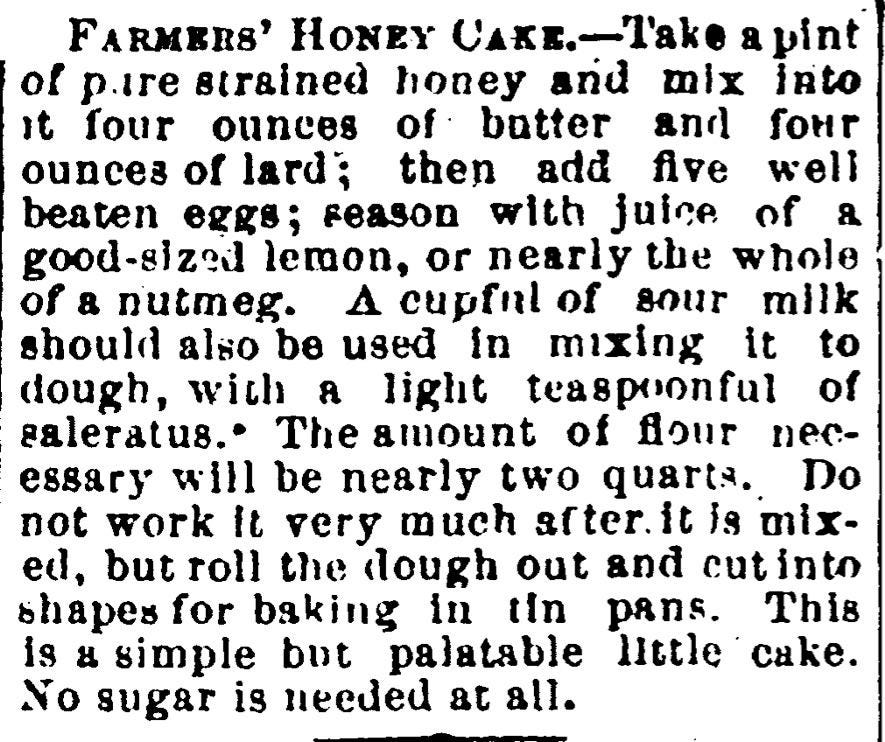Old Southern Honey Recipes
Q-How do you know they are old, professor?
A-There’s no sugar in the recipe along with the honey.
Nothing attests to the grip of sugar on the imaginations of southern bakers and cooks than the universal replacement of honey with sugar in recipes during the nineteenth century. Even honey cakes had half sugar and half honey in the formula. Old European practices such as preserving fruit in honey vanished after the sugar factories in Georgia and Louisiana made loaf sugar cheap and available in 1825. Efforts of the USDA in the 1910s to forestall the effects of sugar shortages by recommending honey as a substitute did turn bakers thoughts to honey once again—particularly during the First World War. Yet it wouldn’t be until the natural foods boom of the 1960s that honey would be explored as an element of cookery in the culture at large.
Yet if there is one thing I’ve learned about southern cookery, it is that there is no region that preserves more old fashioned, atavistic, and peculiar practices than this in the United States. So it doesn’t surprise me greatly that a home cook in Augusta Georgia in 1910 sends a recipe for French Toast (the recipe actually goes nameless) that is 18th-century in inspiration:
A Nice Relish for Breakfast
[Dip] half slices of stale bread in a honey mixture made of a cupful of milk, one egg beaten as for custard, a pinch of salt and two tablespoonfuls of honey. After dipping, brown quickly on both side, using ham or bacon fat to fry in. Serve with honey or butter. Augusta Chronicle February 6, 1910, p 7.
Another antique breakfast dish was both simple and elegant:
Baked Honey Custard
Beat five eggs sufficiently to united the yoks and whites, but not enough to make them foamy. Add one-half cup of honey, four cups of scalded milk, one-eight teaspoonful of powdered cinnamon and one-fourth teaspoonful of salt. Bake in cups or in a large pan in a moderate oven. The baking dishes should be set in water. Washington D C Evening Star November 9, 1917, p19.
One fragment of old wisdom concerning honey dealt with spoilage. If you baked with honey instead of sugar, the baked goods would remain palatable longer; and if you eliminated butter from the formula, you had the potential for baked goods that remained good for a long period of time. In baking the favorite flavoring to add as a complement was lemon. Spice also married well with honey. I reproduce below an 1881 old style recipe for Honey Cake printed in the Virginia Star. The one modern element in this formula is the baking soda (saleratus) that was activated by the sour milk, making the cake rise.
White Clover honey seems to have been a preference among bakers in the pre WWI period; buckwheat was reckoned too sweet. The specialty honeys that came to public awareness in the last half of the 20th century—tupelo, gallberry, sourwood—were too rare to call out in a cookbook or newspaper recipe, although someone told me of a 1900 recipe for pears baked in sourwood honey from western NC.
Take away: if you want the old tradition, don’t fool with any recipe that calls for both sugar and honey in the mix.





